Since getting back into film, photography has become a focal point of my travels, even when it’s simply to document the mundane. Unlike the bottomless nature of digital photography, the limited number of negatives make each picture feel more special, more worthy of cherishing when flipping through old photos. Because of this though, care needs to be taken in what gear to bring. Thinking through the expected weather, subject matter, and level of activity helps make sure that the appropriate lenses, format, and film stock are on-hand. This planning helps make travel photography an enriching experience and hopefully mitigates feeling like a pack mule, with every piece of kit under-the-sun in your bag.
When heading to Puerto Rico for business recently, the trip became an excuse to visit the original Spanish colony on the island, known as Old San Juan. Founded by Conquistador Ponce De Leon in 1508, the town is known for its gridded cobblestone streets, colorfully painted 3+ story homes and open-aired plazas. Situated on a peninsula, it was strategically important for access to the Caribbean and contains a massive fort, with stone walls surrounding the perimeter of the city.
Given these details, I expected to be focusing on architectural compositions in tight streets with high roof lines, so a relatively wide-angle lens would be a must. I find great joy in shooting medium format, as well as the increased resolution over 35mm, so I settled on my Mamiya 6. The standard 75mm lens packs up so small it always comes along. In this case, I brought the wide-angle 50mm lens as well, which is equivalent to a 28mm on 35mm film. Since I was travelling alone, the thought of bringing a second camera seemed excessive.
Puerto Rico is known for its sun, so a slow ISO stock would not pose a problem. Old San Juan is colorfully painted, so a vivid film was a natural choice. Wanting to shoot slides, I decided on 5 rolls of Fuji Provia 100 and 5 rolls of Velvia 50. This may make people cringe at the cost of development, however home processing and scanning with an E-6 kit costs less than two rolls at the lab. All in all, the choice to shoot slide film made the trip feel that much more special.
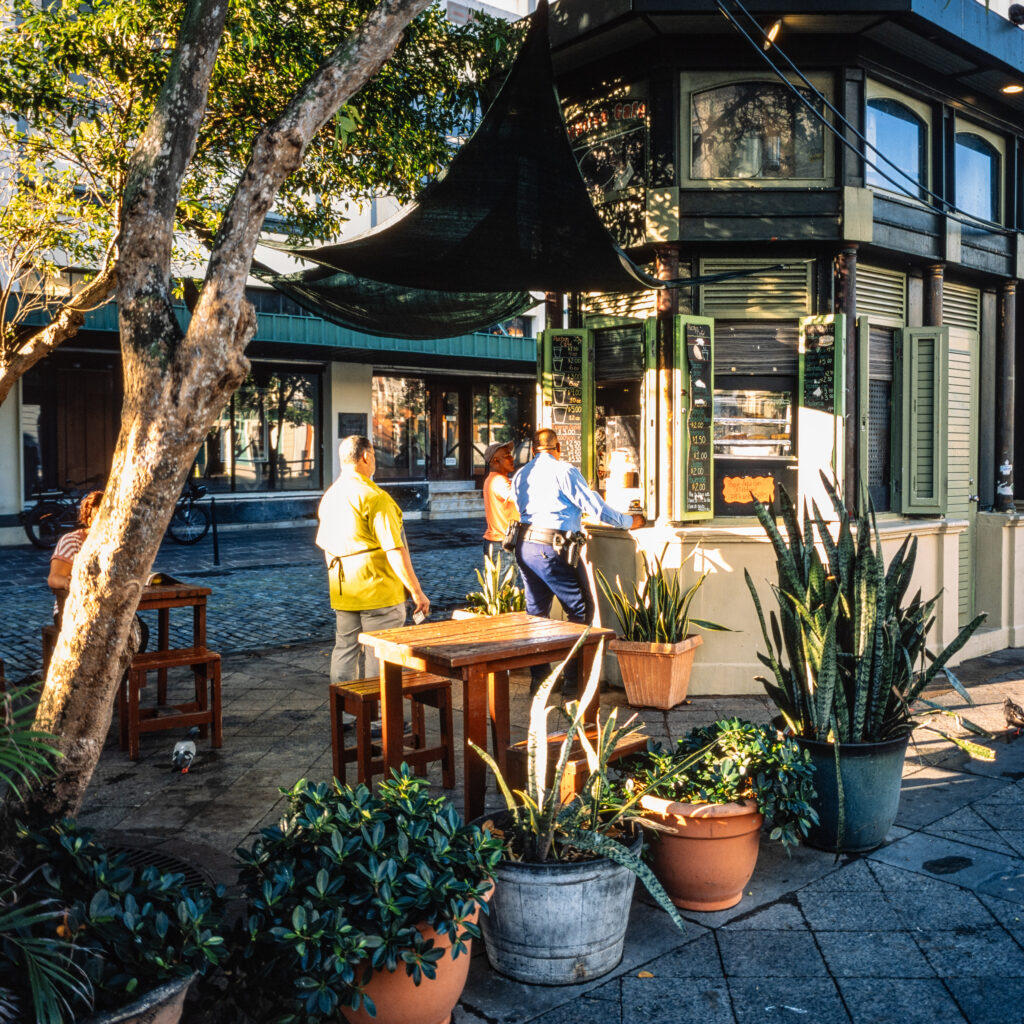
As to peripheral gear, I’d be shooting in full sun so the tripod stayed at home, as well as the shutter release. Sans B&W, all lens filters were left behind. This resulted in packing the Mamiya, two lenses, and 10 rolls of film, which easily slung over my shoulder in a small bag. Given the extreme heat and walking 8 miles per day, this was ideal.
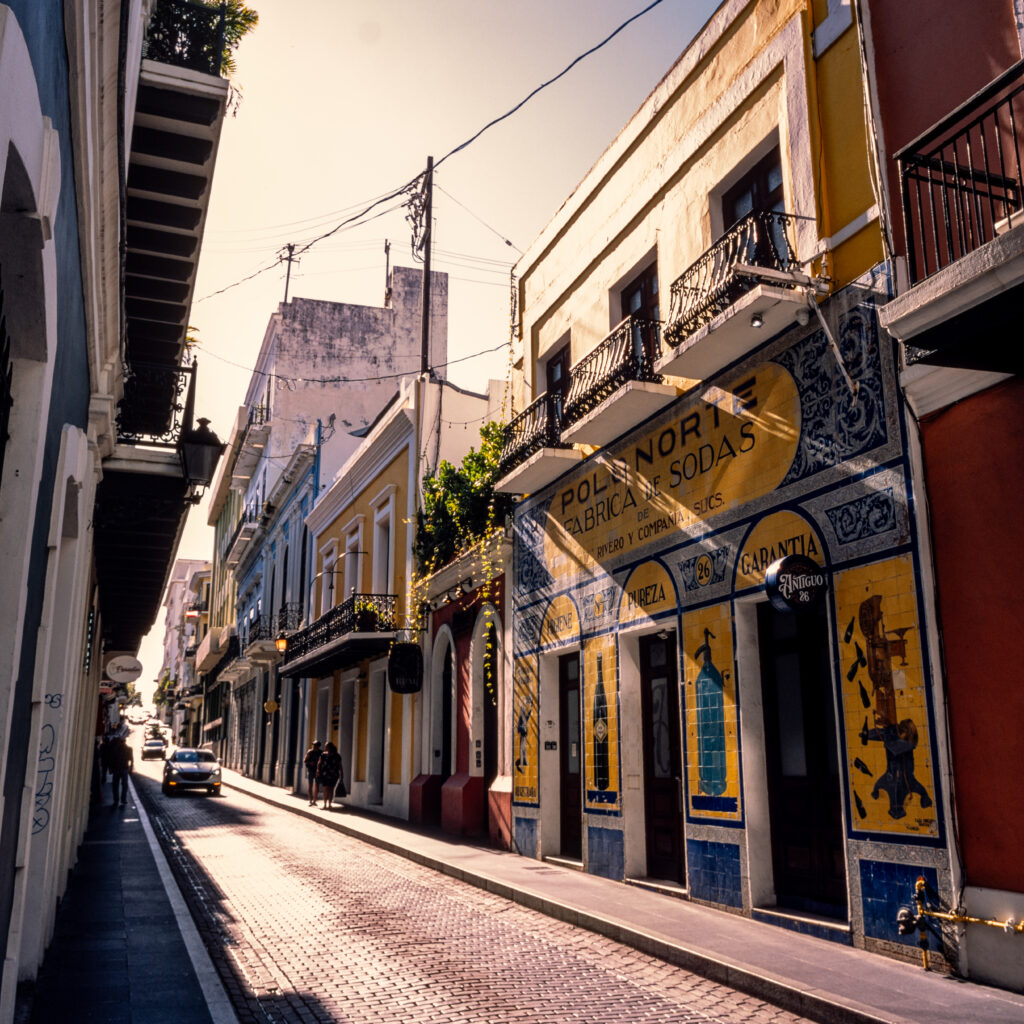
Meandering the Streets of Old San Juan, the verticality of all the buildings is hard to capture. Well-maintained homes with brightly colored trim are starkly contrasted by the occasional long-abandoned building and trappings of dense, urban living. Colorful potted plants and lush tropical trees help break up the monotony of harsh stonework and cobblestone. The streets are filled with a mix of travelers, cruise ship tourists and locals. The plazas are dotted with small café stalls, with people lining up for their morning coffee. A fortress wall encircles the city, which was effective in repelling the Dutch in 1625, but now serves as a reminder of a forgotten time. A sprawling slum along the Northwestern edge of town sits at the base of this aging fort wall, with maze-like streets and permeating decay from the salty ocean spray.
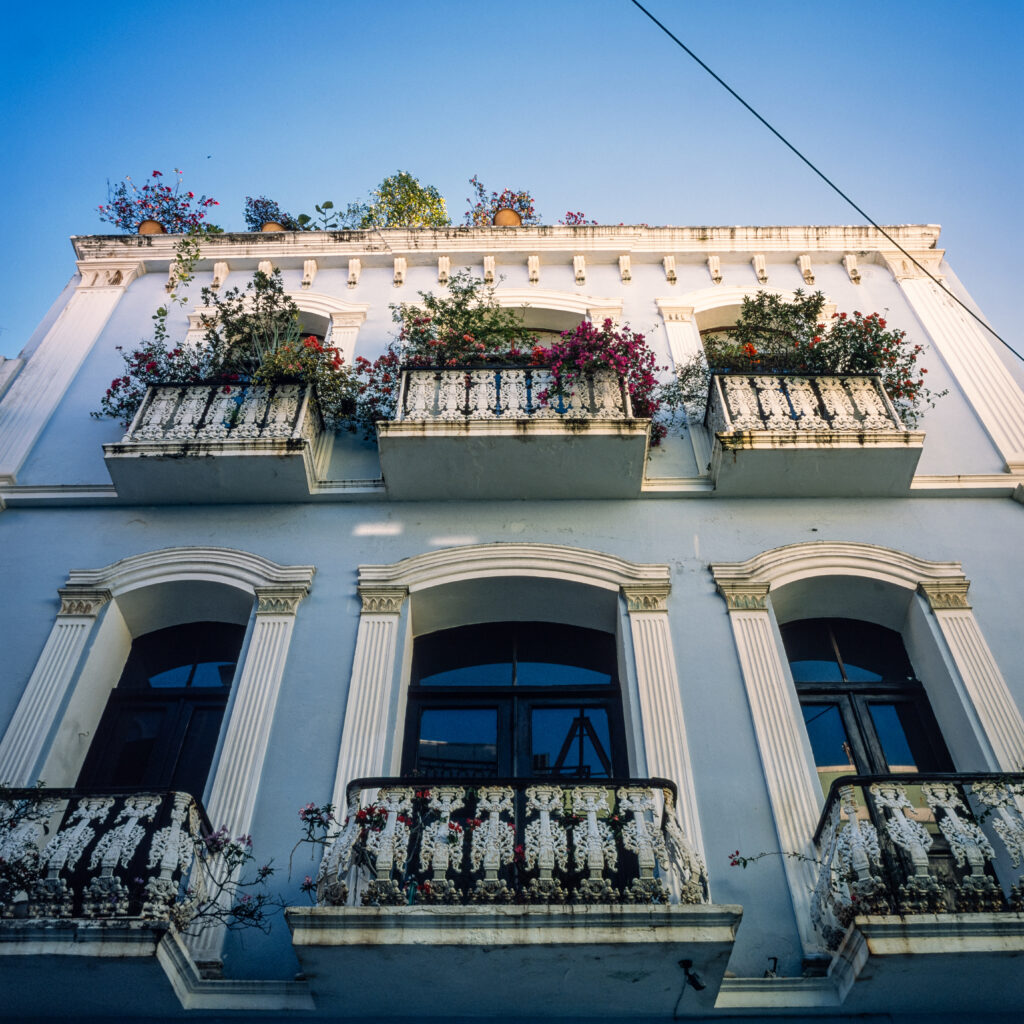
Reflecting on the trip, slide film seemed to be the appropriate choice for capturing the vivid color of San Juan’s architecture, however harsh sunlight tested the limits of this film’s dynamic range. Shooting essentially one filmstock also gave all the pictures a choesive tonality and simplified the subsequent development and scanning.
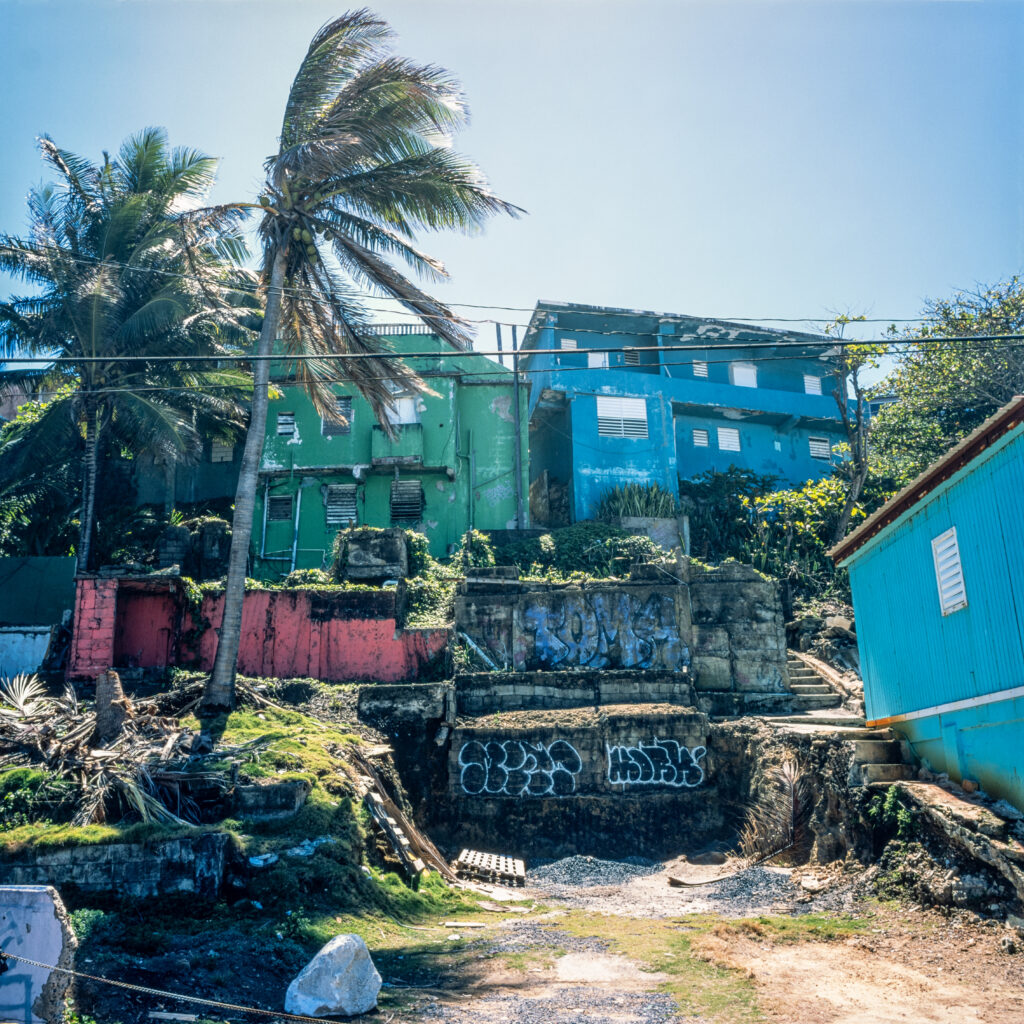
My shortest medium format lens is a 28mm equivalent, but the tight, vertical architecture would have been better captured with a 21mm lens, which I have for 35mm. I think the loss of resolution would have been acceptable in this setting, given how close I was shooting.
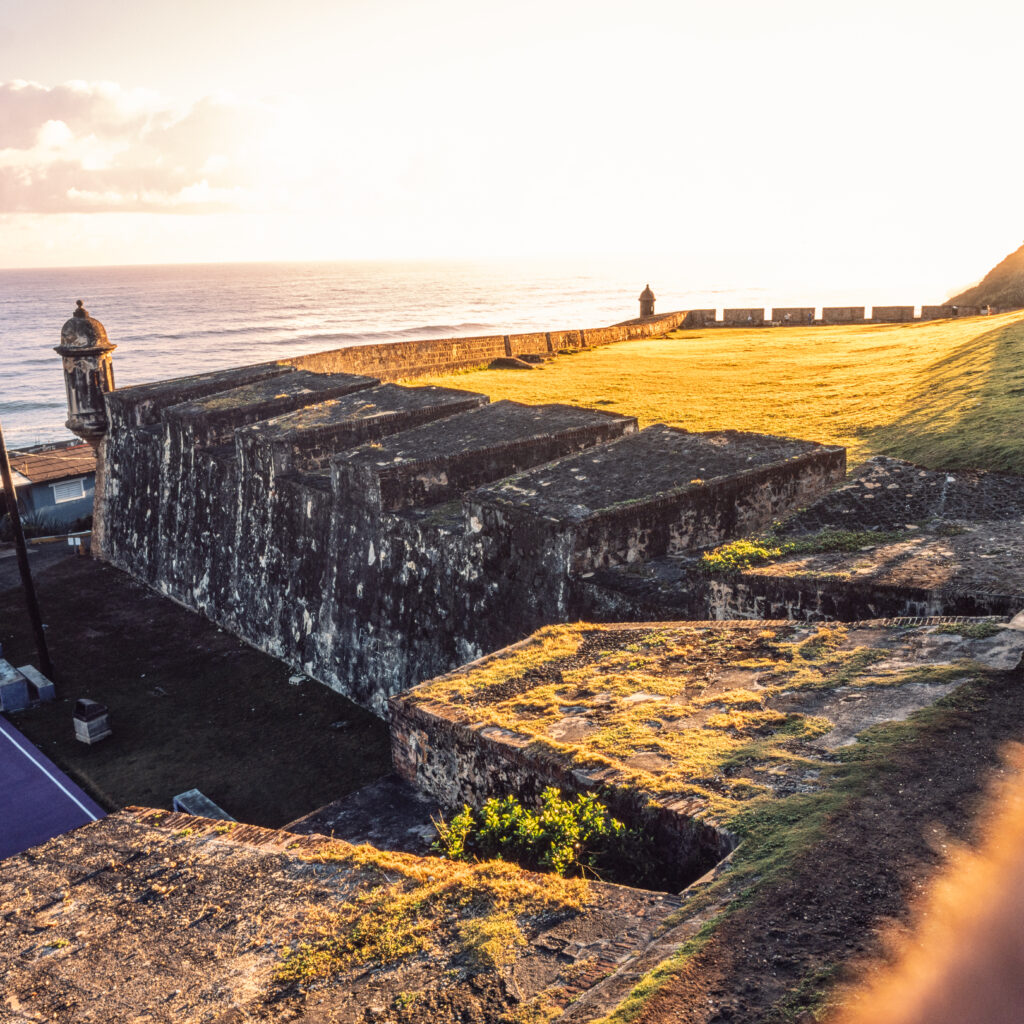
Medium format is amazing to look at, but it was a bit of a process to shoot, develop, and scan 10 rolls. As a comparison, three rolls of 35mm Velvia would have given the same number of shots.
Overall, the Mamiya 6 and Fujichrome helped turn this rote business trip into one with a bit more exploration and memorable pictures to bring home. Although my gear felt about right, travelling with film presents a set of compromises, and the biggest one on this trip was dynamic range. Color negative film may have been a better choice, however there is something magical about medium format positives, showing the scene as captured in-camera. Like finding old Kodachrome slides of travels gone by, 120 slides on a light table are mesmerizing, sparking a sense of joy most other formats cannot do, nearly taking me back to the moment they were captured.
Share this post:
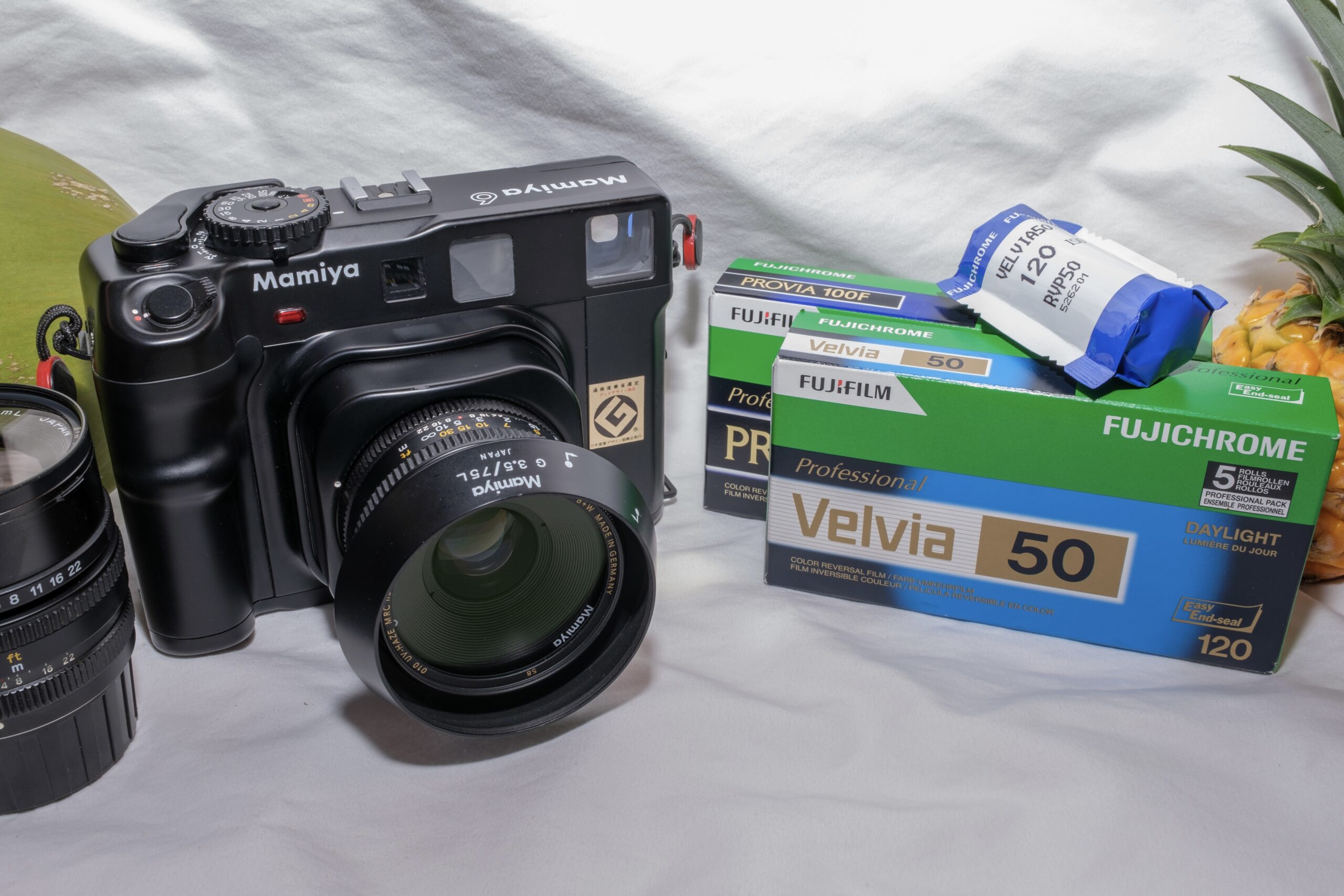








Comments
okto on 5 Frames in Old San Juan On a Mamiya 6 with Fujichrome
Comment posted: 14/08/2024
Comment posted: 14/08/2024
Comment posted: 14/08/2024
Gary Smith on 5 Frames in Old San Juan On a Mamiya 6 with Fujichrome
Comment posted: 14/08/2024
Comment posted: 14/08/2024
Gary on 5 Frames in Old San Juan On a Mamiya 6 with Fujichrome
Comment posted: 15/08/2024
Comment posted: 15/08/2024
Jeffery Luhn on 5 Frames in Old San Juan On a Mamiya 6 with Fujichrome
Comment posted: 15/08/2024
Nothing beats viewing fresh transparencies on a light box. Nothing is more difficult that nailing perfect exposures with that film stock. Your upshot of an old building did that well! Nice!
I'm planning a short trip to Brazil this fall. I may be a chicken and shoot digital. Still thinking about it.
Dan Kehlenbach on 5 Frames in Old San Juan On a Mamiya 6 with Fujichrome
Comment posted: 16/08/2024
Ivan Baptista Jr on 5 Frames in Old San Juan On a Mamiya 6 with Fujichrome
Comment posted: 23/08/2024